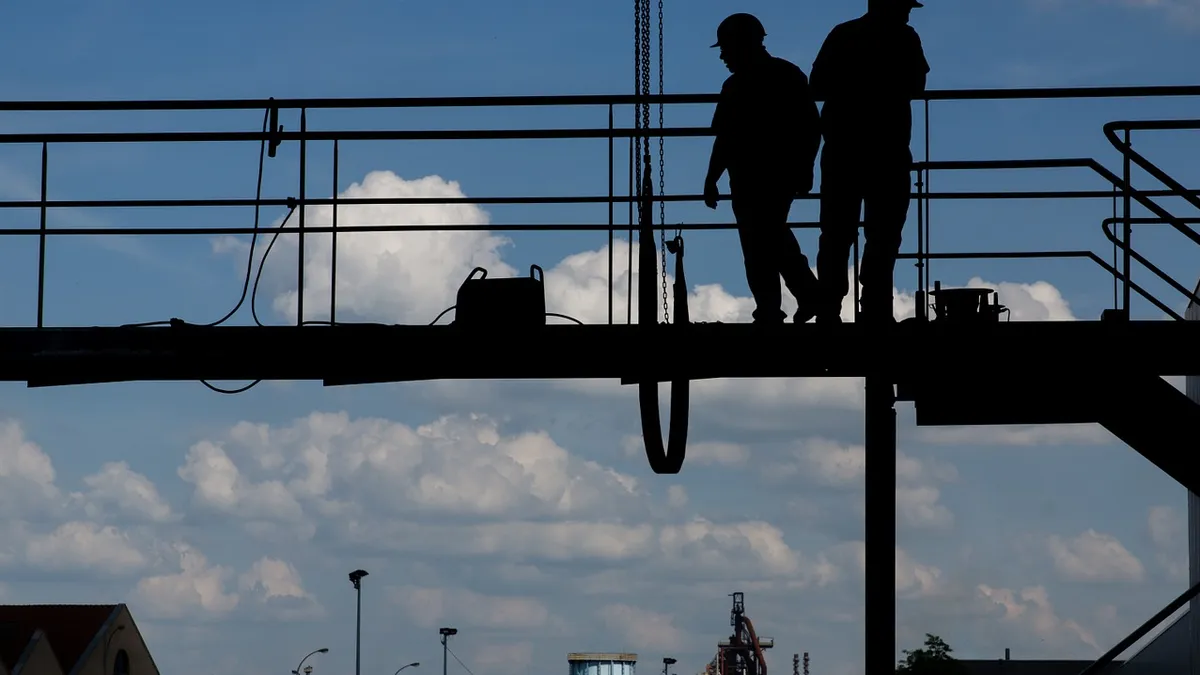Dive Brief:
- The construction industry boasted a successful start to 2017 with 36,000 net new jobs in January, the Bureau of Labor Statistics reported Friday. Industry employment crept to the highest recorded level since November 2008, according to the Associated General Contractors of America. The month’s total construction employment of 6,809,000 showcased a 170,000-job — 2.6% — increase from January 2016.
- Within the industry, the residential sector added 20,300 positions last month, while the nonresidential sector (including the heavy civil and engineering sectors) added 14,900 jobs.
- Average hourly earnings in construction notched up 3.2% between January 2015 and January 2016 to $28.52 an hour. Wage growth for construction workers now hover around 10% higher than the overall private sector average.
Dive Insight:
The positive report signals the best month for construction job growth since March 2016, according to the Associated Builders and Contractors. While the U.S. Commerce Department reported a dip in December construction spending earlier this week, the month showed a resurgence in housing starts, due largely to growth in the multifamily sector.
2016 overall saw an uptick in nonresidential construction, accounting for nearly a quarter of the industry’s total job creation, according to ABC Chief Economist Anirban Basu. In January alone, nonresidential projects accounted for more than 40% of net new jobs, signaling faster growth in the sector, the ABC reported.
Despite marked employment growth, the industry’s unemployment rate shot up to 9.4% in January — a figure that Basu said points to increased interest in the construction industry. In a release, Basu said more people have started looking for work in the industry, a trend that he attributes, in part, to indications from the Trump administration and lawmakers that they will make infrastructure spending a priority.
The increase in new construction activity dovetails with an ongoing labor shortage and a pinched regulatory climate that could dampen the effect of the projects. In its analysis, the AGC noted that the spike in employment came as employers increased pay to combat the ongoing labor shortage.
A January survey released by the AGC noted that nearly three-quarters of the 1,281 participating contractors said they hoped to increase their employment in the coming year — but an equal number expressed trouble filling both hourly and salaried positions. And with end-of-month construction openings at a 17-year high, a dearth of workers continues to put a strain on the industry.
"The employment gains would be even larger if there were enough workers with the right skills available to hire," Ken Simonson, AGC’s chief economist, wrote in a release.
In an effort to jumpstart the worker pipeline, industry groups have suggested marketing efforts, stronger focuses on technical training programs in school, immigration reform and a wide coalition effort. While the labor shortage will continue to squeeze the industry, Dodge Data & Analytics has predicted a 5% increase in starts for 2017, totaling $712.9 billion for the industry, and other industry observers remain cautiously optimistic about the year’s prospects for construction growth.













